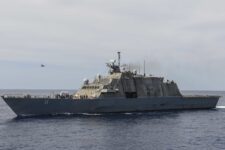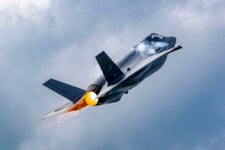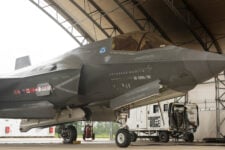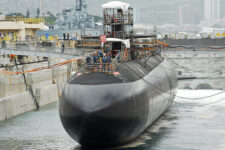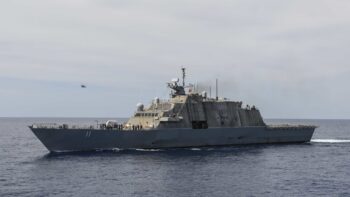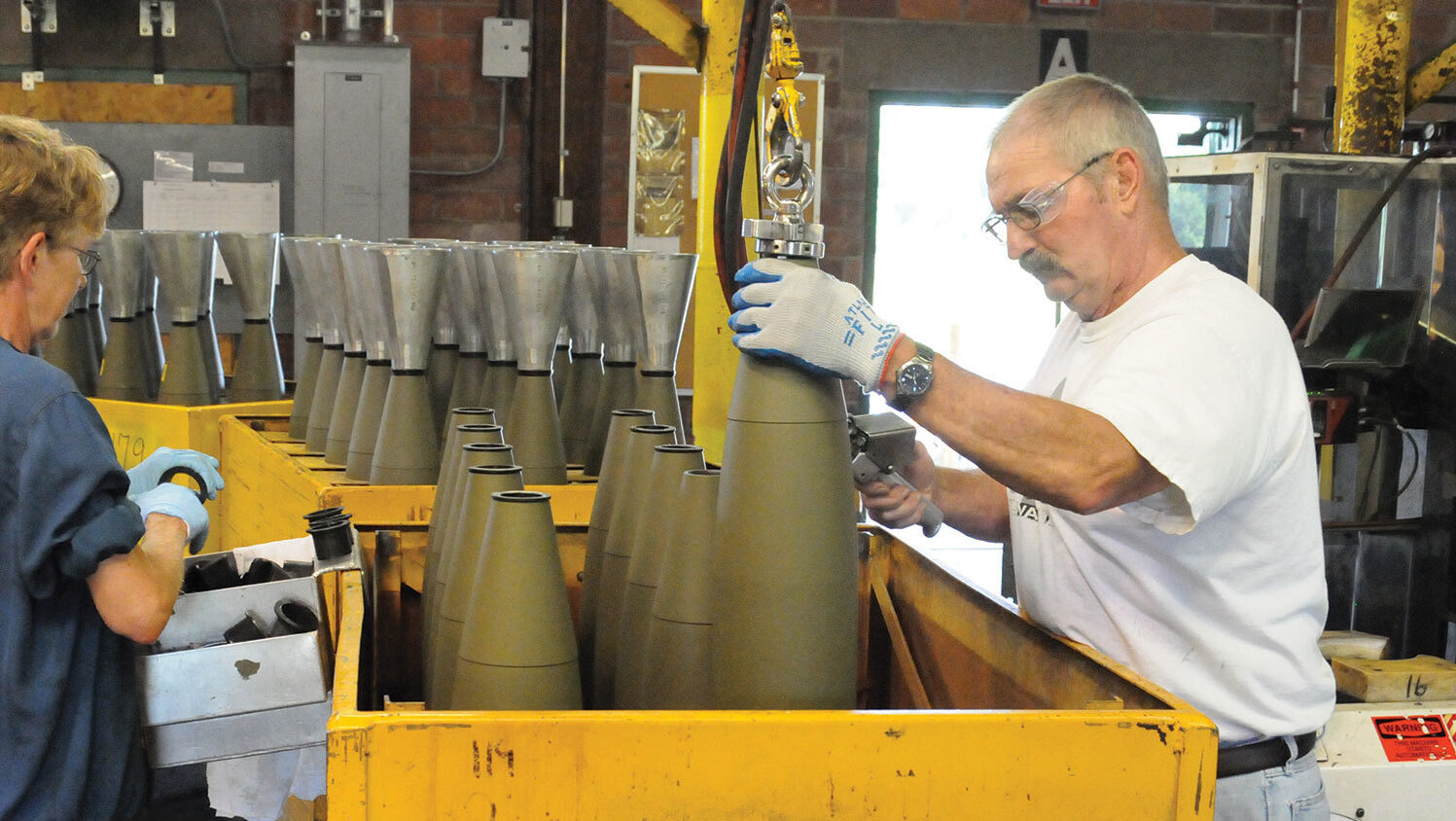
Contractor employees at Iowa Army Ammunition Plant prepare 155 mm artillery rounds to be filled as a part of the load, assemble and pack operation. The plant is an example of surge production, a key consideration in JMC’s risk model. The Iowa plant began production in 1941 to supply troops in World War II, then stopped in 1945 before resuming ammunition manufacturing in 1949, with a surge in 1950 in response to the Korean conflict. (Photo by JMC)
The Ukraine conflict has put a bright, harsh spotlight on the current status of US defense supply chains. In the following op-ed, Olivia Letts and Jerry McGinn of the Baroni Center for Government Contracting at George Mason University’s School of Business argue that the US has a potential solution — if it is willing to look to the past.
As major US defense contractors rush to expand production for over a dozen rocket and missile systems to resupply Ukraine, supply chain limitations have made their task difficult. One major contributor to this problem is an overreliance on single and sole suppliers of critical items in defense procurements. To mitigate this persistent problem, a somewhat retro acquisition method may point the way for the future. This method, second sourcing—the practice of using at least two different suppliers to provide goods and services that are comparable in form and/or function—merits serious consideration.
US leaders on both sides of the aisle recognize that defense industrial base resilience is critical to national security. Reports by the Trump and Biden administrations both identified single and sole sources as major risks to US defense and other industrial supply chains. The introduction of alternative suppliers could help mitigate the risks of single- and sole-sourcing, but second sourcing in defense acquisition has become rare since its use as a preferred strategy in the 1980s. To better assess future prospects for second sourcing, the Baroni Center for Government Contracting at George Mason University recently examined the history, benefits, and challenges of second sourcing.
During the 1980s military buildup, spurred on by the Competition in Contracting Act and the Packard Commission, second sourcing was used for a wide variety of defense components and major sub-systems, primarily with the goal of introducing competition to cut costs. For example, the Air Force and Navy worked together to qualify second sources for annual split buys of various missiles and recorded great success from such programs in terms of both cost-cutting and performance reliability. This level of focus led to improvements and cost savings in at least 14 tactical missile programs, various smaller munitions components, and even ejection seats for aircraft.
One of the most well-known successes is the first iteration of the “Great Engine Wars.” In the early 1980s, the Air Force could not come to an agreement with Pratt & Whitney over who should pay to fix the performance-related issues of the original F100 engine for the F-15 and F-16 fighter jets. The Air Force decided to take on General Electric as a second supplier for the engine and introduced a dual award arrangement in which the two suppliers would continuously re-compete for larger shares of production awarded based on the firms’ pricing and performance. Second sourcing the engine not only resolved the engine’s performance-related issues but also improved upon it, saving DoD some $2-3 billion over a 20-year lifecycle and doubling reliability per 1,000 engine flight hours.
These second sourcing efforts were largely government driven. The approach taken by the Engine Wars and various missile programs — i.e., creating a “split buy” by establishing separate production contracts — resulted in co-production benefits, including the willingness of the competing prime contractors to invest their own resources into developing better products that would earn them larger shares of long-term production opportunities. In other areas, the government had prime contractors qualify multiple viable second sources for a specific part to establish additional production capacity for and improve upon otherwise identical or interchangeable items, such as ammunition and its various components. For example, to better performance and lower costs of ammunition for the A-10 Thunderbolt attack aircraft’s GAU-8/A autocannon, the Air Force required the prime to take on two competitive subcontractors for ammunition development, ultimately reducing the per round cost from the original estimate by up to 80 percent.
Starting in the 1990s, the defense community moved away second sourcing for two main reasons: tighter defense budgets and quality issues associated with poorly implemented second sourcing efforts. With national defense spending declining from 6 percent of GDP to around 3 percent by the end of the 1990s, the costs of establishing and maintaining new sources of supply became major deterrents to second sourcing and the practice faded over time.
Today, defense officials and appropriators largely shy away from second sourcing efforts. Paying to establish new suppliers can seem like a risky bet in a contracting environment characterized by acute competition over procurement funds and a widespread focus on cost-cutting and efficiency.
The need to strengthen supply chains, however, is creating an opportunity for the revival of second sourcing. The Pentagon has begun lending assistance to companies seeking new domestic and international suppliers for programs experiencing supply chain bottlenecks. In 2022, the Defense Department also established a team specifically tasked with working with contractors to identify supply chain shortages, and providing funds to help resolve such issues. Since then, the Office of the Under Secretary of Defense for Acquisition and Sustainment released a memo in March 2023 establishing the Joint Production Accelerator Cell to improve defense production capacity and resiliency.
The upfront costs of establishing a new source of supply, as well as the entailing qualification and testing requirements involved, are undeniably high. Cost constraints were recently cited by Air Force Secretary Frank Kendall as the main reason the Air Force chose to upgrade rather than second source the current F135 engines for the F-35 fighter jet. However, preoccupations with cost could impede technology advances and supply chain resiliency. The prioritization of “efficiency over resilience,” as Under Secretary for Acquisition and Sustainment Bill LaPlante noted earlier this year, needs to be reexamined in light of current defense needs. Therefore, if second sourcing is to make a sustainable comeback, the paper’s first recommendation is crucial: to prioritize agility and resilience over immediate cost savings. This can only be accomplished through a conscious mindset shift within the defense community.
Second sourcing is not the right approach for every program. Thus, defense leaders need to develop an approach to identify the highest priority components to second source. Since defense programs can contain hundreds of vulnerabilities, a joint government-industry effort to establish best practices or risk models could go a long way in promoting confidence and effectiveness when pursuing second sourcing strategies.
Next, it will be important to create better financial incentive structures for second sourcing. This could include establishing a tax on certain defense programs, like that used for Small Business Innovation Research (SBIR), to build resources available for establishing new sources of critical items. Since second sourcing works best with large and stable orders, increased use of multi-year procurements could also help. Additionally, expanding the use of open system architectures in defense programs and pursuing more international co-production and co-development efforts will help facilitate effective second sourcing.
Second sourcing is not a panacea to the supply chain issues facing the United States. However, it will be a useful tool in helping to combat defense supply chain vulnerabilities. Going back to the future to revive second sourcing is a worthwhile pursuit to help build resilience in our defense industrial base supply chains.
Olivia Letts is a Research Manager at the Greg and Camille Baroni Center for Government Contracting in George Mason University’s School of Business. Jerry McGinn is the Executive Director of the Center and a former senior DoD acquisition official.
Wittman: Pentagon needs to ‘narrow the scope’ of CJADC2
“I think the Pentagon can do this, [but] I think they’re understanding that they do have to scope this down,” Rep. Rob Wittman said about the Pentagon’s CJADC2 effort.





